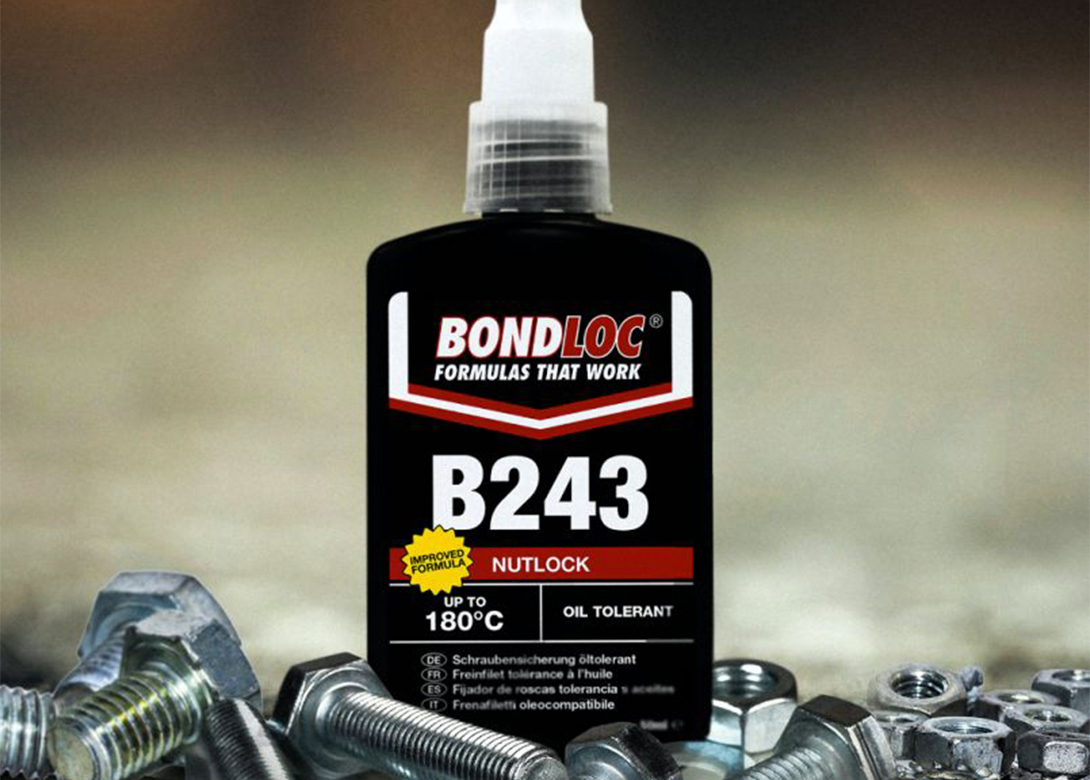
UK-based Bondloc manufactures industrial adhesives and sealants with over 2,000 adhesive formulations in its portfolio But why is anaerobic chemistry still such an integral part of engineering and maintenance today?
Threaded fasteners were invented more than 2,000 years ago and are still widely used in machinery design and assembly, although usage is declining. These traditional fastening methods have many flaws; they can self-loosen, particularly under the stress of heat or vibration, resulting in downtime, quality issues, recalls, corrosion and increased maintenance. Regardless of how small the gap, side to side movement of the bolt within the nut caused by operational vibrations will eventually cause the bolt to loosen, with sometimes catastrophic results.
Anaerobic threadlockers replace mechanical threadlocking devices and offer tangible benefits in terms of productivity, efficiency and safety. These single component acrylic polymers have an anaerobic cure system that remains in a liquid form until air is absent and contact is made with metal ions. A liquid threadlocker will fill all voids between mating threads and solidifies to form a thermoset plastic that unitises the assembly.
Threadlockers also coat the entire thread and are resistant to water, solvents and oils. They serve the dual purpose as sealants and prevent corrosion from liquids, gases and air-born contaminants such as dust which would otherwise compromise bolted assemblies. Clean up is easy since any excess adhesive remains as an easily wiped away liquid.
Bondloc has an extensive portfolio of threadlocking adhesives, including COSHH free safer products. These adhesives have varying differentials in viscosity, strength, temperature resistance, cure speed and flexibility. For more specific or unique applications, formulations can be modified and then manufactured in-house. Either way, to determine the best product to use for the job, three main questions must be asked. What’s the fastener size? Which strength is needed? How frequently will the assembly need to be serviced?
But should we also challenge the efficacy of the products we purchase by asking our suppliers if their published data stacks up? The answer is most definitely, yes.
Every adhesive product purchased is underpinned with a technical data sheet and a material safety data sheet.

Having spent a decade in the fastener industry experiencing every facet – from steel mills, fastener manufacturers, wholesalers, distributors, as well as machinery builders and plating + coating companies, Claire has developed an in-depth knowledge of all things fasteners.
Alongside visiting numerous companies, exhibitions and conferences around the world, Claire has also interviewed high profile figures – focusing on key topics impacting the sector and making sure readers stay up to date with the latest developments within the industry.
Don't have an account? Sign Up
Signing up to FastFixTechnology.com enables you to manage your account details.